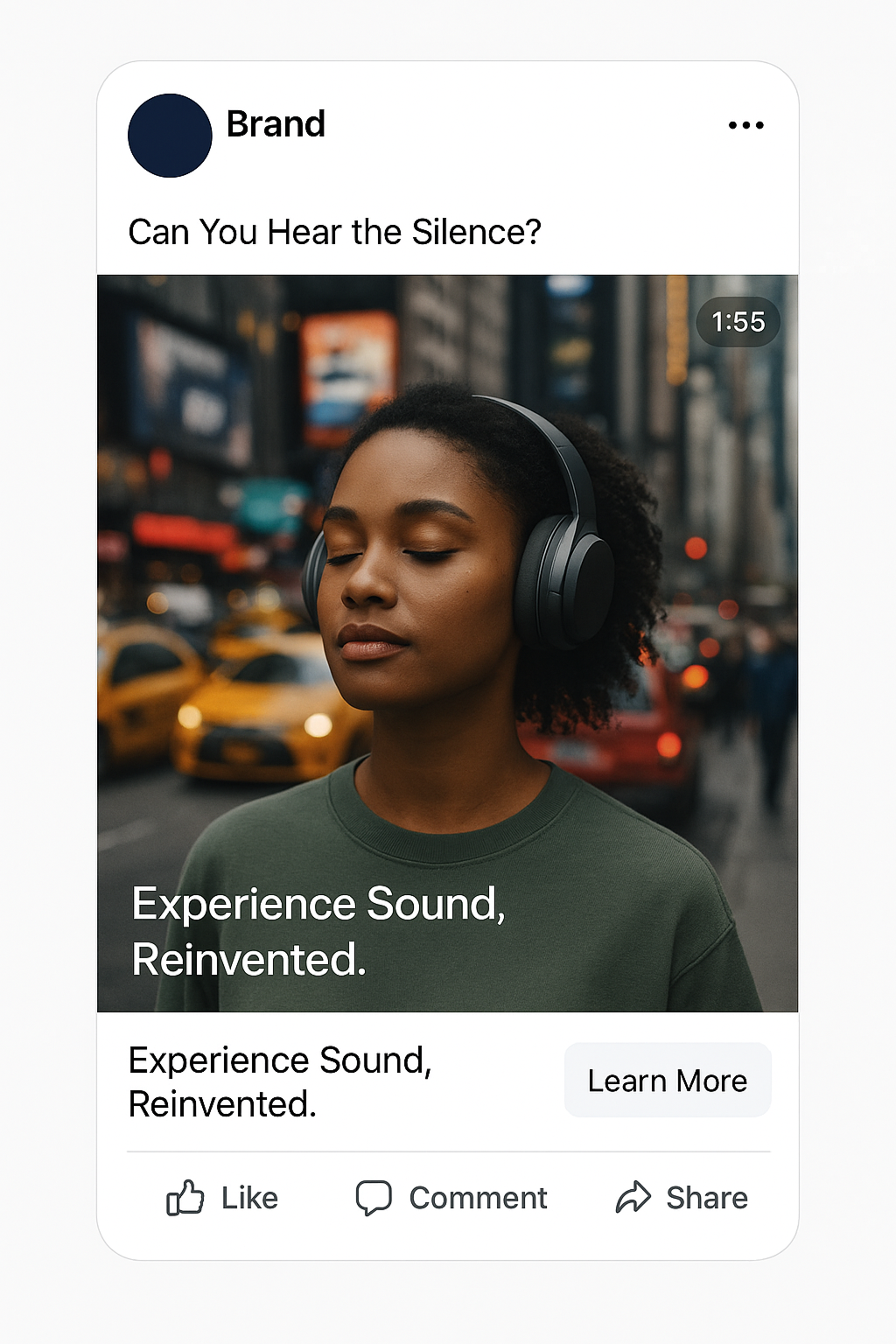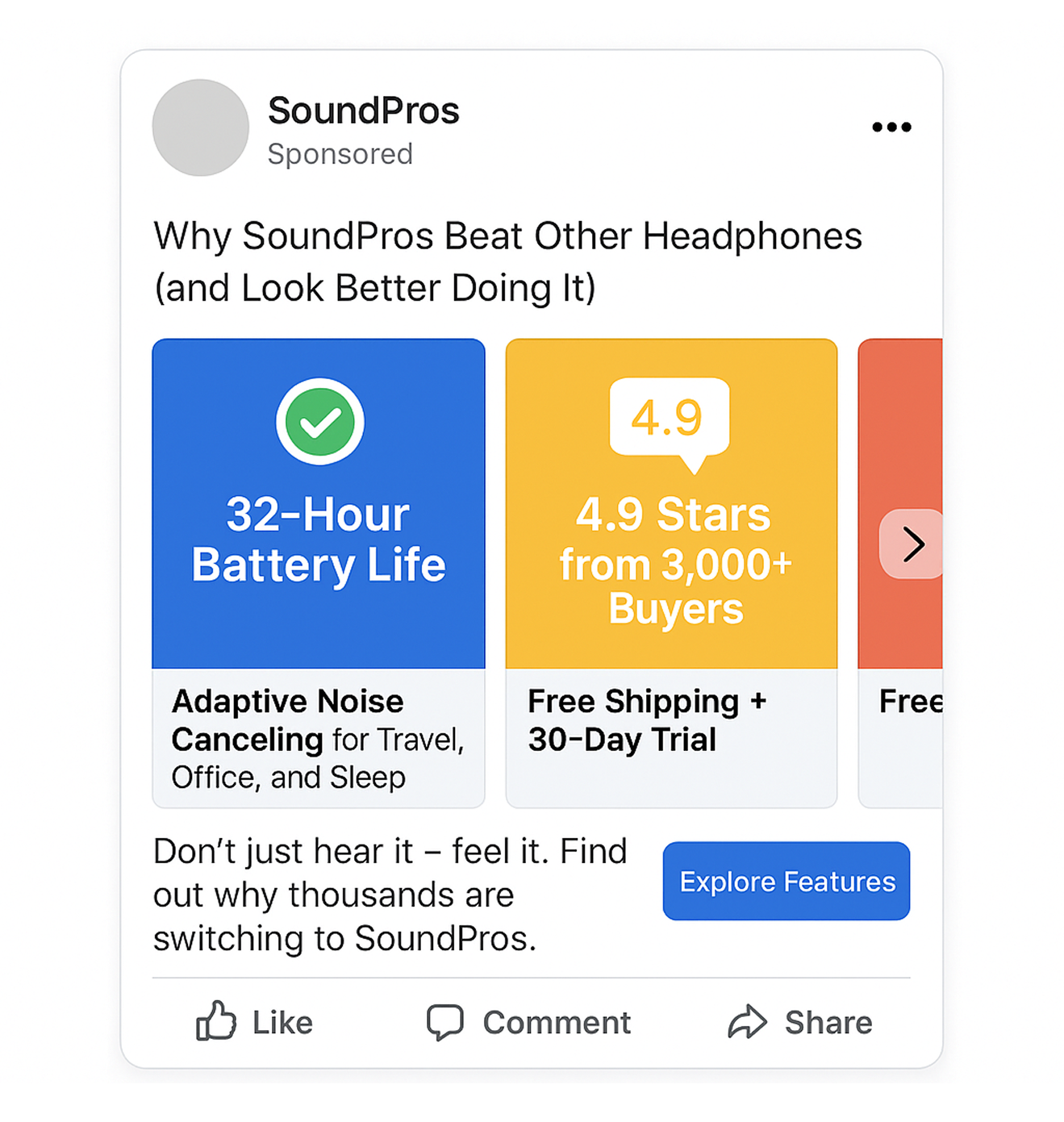Not all ads are created equal. Yet too many marketers treat them like they are.
If you're serious about getting results with Meta or any other platform, you need to understand how awareness, consideration, and conversion ads serve different purposes — and how to time them right.
This guide breaks down the real difference between the three, why your campaign performance suffers when you mix them up, and how to build a full-funnel strategy that actually converts.
Awareness Ads — Make Them Know You Exist
Objective: Reach and recognition.
Awareness ads are your first impression. Your audience doesn’t know you yet, so you’re not trying to convince them to buy — you’re trying to get remembered.

Here’s what great awareness ads aim for:
-
High visual impact. Use short-form video, striking visuals, or scroll-stopping copy.
-
Brand clarity. Make sure your name, logo, or identity is front and center.
-
Emotional resonance. Tap into pain points, aspirations, or values your audience relates to.
-
Light CTAs. Avoid "Buy Now." Instead, use "Learn More," "Watch," or "Explore."
Think: brand story, product teaser, behind-the-scenes, or topical hook.
Want to make awareness ads even better? Use video content for reach and engagement, then retarget viewers later. Learn how to set up effective awareness campaigns here.
Common Pitfalls:
-
Measuring success by clicks or sales (wrong metric).
-
Overloading cold audiences with too much information.
-
Jumping straight to a pitch.
Awareness is not about getting the sale — it’s about earning attention. It’s the top layer of your funnel. Miss it, and you’ll chase cold leads with high costs and low returns.
Consideration Ads — Build Interest and Desire
Objective: Engagement, education, and lead capture.
Once your audience knows who you are, they need to decide if you’re worth their time. That’s what consideration ads are for — helping them weigh their options.

These ads should focus on:
-
Value communication. What do you do better? Why should they care?
-
Proof points. Show reviews, testimonials, or expert endorsements.
-
Useful CTAs. Offer guides, downloads, or lead magnets that deepen the relationship.
Some winning formats at this stage:
-
Carousel ads explaining core benefits or features.
-
Lead form ads that offer a resource (like an ebook or checklist).
-
Side-by-side comparisons or demo invitations.
Not sure who to target at this stage? Use behavior-based targeting — like people who watched 50% of a video or visited your pricing page.
More Tips:
-
Use email custom audiences to re-engage interested users.
-
Don’t repeat the same creative from awareness. Build on it.
-
Add credibility using real customer stories or UGC.
Want a full walkthrough? See how to build persona-driven campaigns that speak to each type of prospect.
Conversion Ads — Drive the Action
Objective: Sales, sign-ups, or booked calls.
This is the bottom of the funnel. Conversion ads are direct and clear — but they only work well when the audience is already warmed up.

If you try to convert cold users, expect frustration and low ROAS.
What high-converting ads do well:
-
Speak to objections. Anticipate what might hold someone back from buying.
-
Create urgency. Limited-time offer? Deadline? Let them know.
-
Feature offers clearly. Don’t hide the deal or price.
-
Strong CTA. "Buy Now," "Get Started," "Claim Your Discount."
Key audiences for conversion ads:
-
Website visitors who viewed product or pricing pages.
-
Cart abandoners synced from Shopify, WooCommerce, etc.
-
Lookalikes built from top customers or high-LTV segments.
Read more about the conversion issues and how to fix them.
Checklist to boost conversions:
-
Offer clarity: does the user know exactly what they’re getting?
-
Trust elements: include reviews, guarantees, or badges.
-
Load speed: is your landing page slowing down the purchase?
Avoid this common trap: using conversion objectives with audiences that haven’t been warmed up. If Meta shows your offer to the wrong people, you’ll often see the "Ad Set May Get Zero" message — or worse, you’ll get clicks without results.
Putting It All Together: Don’t Skip the Funnel
A high-ROAS campaign doesn’t rely on one ad — it relies on a sequence.
Here’s how to map the funnel stages to ad types and goals:
| Funnel Stage | Objective | Example Content | Goal |
|---|---|---|---|
| Awareness | Reach, Video Views | Product teaser, founder story, visual storytelling | Stop scrolling |
| Consideration | Traffic, Leads | Case study, value explainer, downloadable guide | Build trust and interest |
| Conversion | Sales, Purchases | Offer ad, UGC review, urgent promo | Get the sale |
For eCommerce or lead gen brands, combine retargeting logic with time-based exclusions. For example, exclude buyers from the last 7 days when running consideration or conversion ads.
Final Thoughts: Ads Aren’t Just Ads — They’re Experiences
Each ad should match the mindset of the audience seeing it.
Push a discount too early, and you feel desperate. Educate too late, and you slow down the sale. The best-performing brands treat campaigns like conversations, not billboards.
Want help choosing the right objective? Check out our breakdown of Meta Ad Campaign Objectives.
Build your funnel, respect each stage. And stop expecting cold audiences to behave like warm buyers. That’s how you get the clicks and the conversions.

